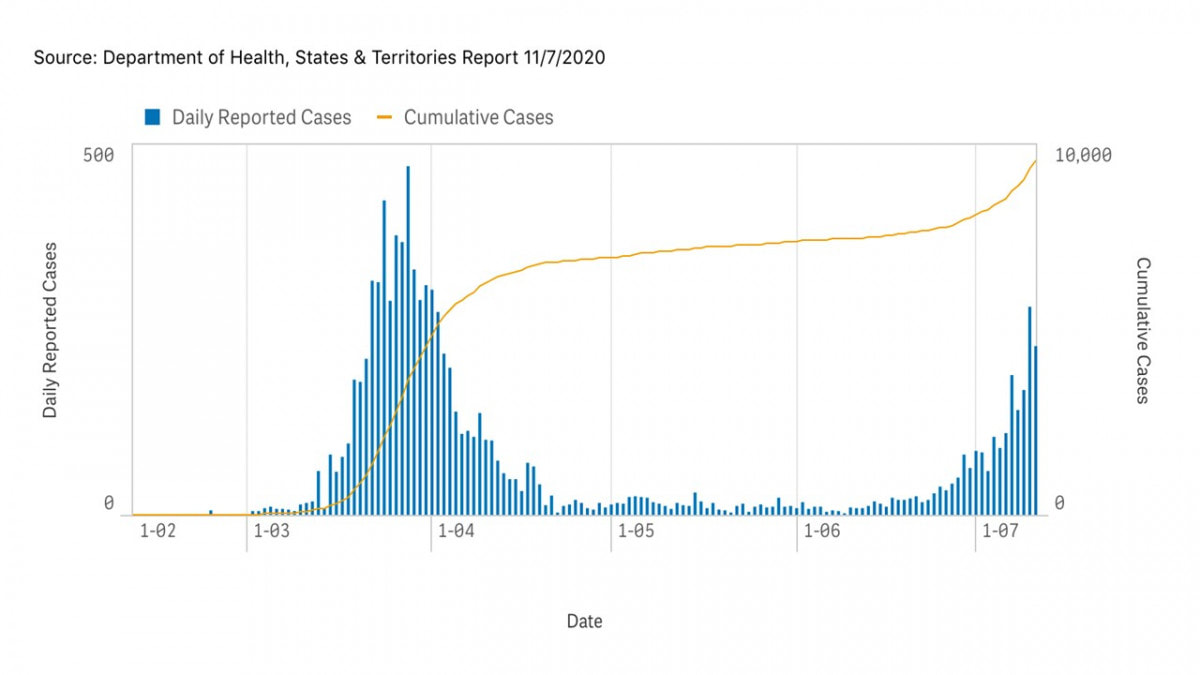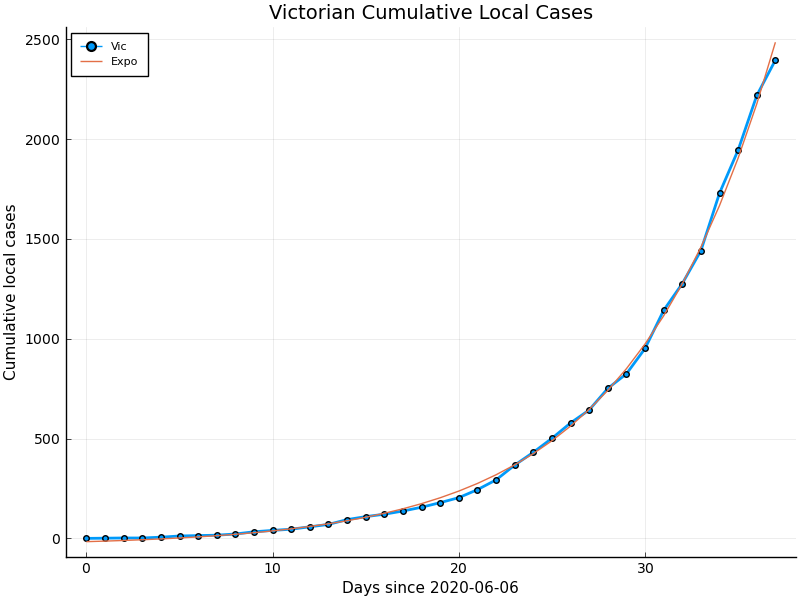|
SEARCH My Blog (Opens in new tab)
First wave optimism has been swept awayWhile many countries are still in the first wave of the pandemic, Australia completed the first wave and is now in a second. We thought that it would be easier. But it's worse. You might think that getting through the first wave of the world's largest and most infectious pandemic would make you better able to handle a second round. That's not what I am now experiencing in Australia. We managed the first wave wellAustralia did a great job of crushing the first wave. You can see from the chart below that we completely flattened the curve to a negligible number of new cases. In fact, for about 6 weeks, we had near-zero instances across the entire country. The total number of deaths from the first wave was about 100. We were able to be so successful because the Federal Government convened a new National Council to combat the coronavirus. This Council included the leaders of all our states and territories and their chief medical officers. Political affiliations were sidelined, and science drove a coordinated set of plans and actions across Australia. The Federal Government jumped in by doubling unemployment benefits, and initiating a "JobKeeper" scheme. JobKeeper allowed employers to register their employees and have them receive $1,500 per fortnight directly paid into their bank accounts. This scheme incentivised employers to keep employees on the books instead of terminating them. Various state governments also offered grants to sustain businesses - especially small businesses. For example, I qualified for a $5,000 Business Support grant, since my revenue dried up in April. (It's since improved, thankfully.) Tough but with underlying optimismOur first wave experience was tough, with an undercurrent of optimism. Between March 12, when the country went into lockdown, through to the end of May, we had experienced unprecedented disruption but fantastic unity about our joint responsibility.
After about 6 weeks of loosened restrictions disaster struck. An outbreak started in Melbourne, a city of 5m people. Initially regarded as a flare-up, it was not to be. It grew rapidly - from 5 people to 12 to 25 to 50 to 200. Community spreadOur first wave in Australia was driven by foreign arrivals, both aircraft and cruise ships. This outbreak was different as it is being by community spread. Within a week the city of Melbourne was back into Stage-3 lockdowns, with enforced penalties. Here is what Stage-3 looks like; we can only leave home for:
Retail food outlets can do takeaway only. - 133 fines were issued in Victoria over the past 24 hours for breaching coronavirus lockdown rules. The first wave cautious optimism evaporatedThe mood now is a lot more sombre, more gloomy. The cautious optimism that accompanied the first wave has vanished. During the first wave, we knew that there would be flare-ups. We knew that we had to remain diligent and keep up social distancing and wearing masks and washing our hands. And we felt that by being aware that we had a small modicum of control. We’ve now lost our grasp on that straw of having any sense of control. In the first wave, contact tracing worked well, especially since most cases could be linked to overseas arrivals. In this second wave, less than 20% of originators have been traced, and untraced community spread is rampant. In Melbourne, our schools are closed indefinitely. It's winter break right now, and that has been extended for one week, and then remote learning to commence for an initial 5 weeks. All organised school events for the remained of the year will inevitably be cancelled. My local coffee shop owner said to this morning that his regulars are no longer showing up for takeaways, and the mood is bad. People seem to have lost their motivation. Unfortunately, I had to agree. The less-well-off are particularly suffering more this time around, and the whole community feels their pain. People seem less present, more distantThe extended lockdown has also re-created the stress of working from home, minding the kids, schooling the kids, and not being able to any well. Although we are now well-versed in using the tools of remote working, productivity is well down. The simple things that used to take a 10-minute face-to-face meeting are stretching into days of cross-communication. The boundaries between working and home life are shattered, as are the hours. Messages arrive at all hours about things needing to be done quickly - a consequence of tasks building up. More than those productivity burden, there is an spreading sense of loss of purpose. We need to get up and walk about more often to build up the moment to get things done. Procrastination feels everywhere. People passing in the street seem to be walking more mechanically and with less presence. The new reality is shaking expectationsTaken together, the new restrictions, the economic consequences, the new normal of working from home, the feared impact on our children, and the loss of the remnant of control have made the second wave far more demoralising than the first. Nevertheless, in Australia, we're lucky. We have only 109 deaths to date. We still have well-coordinated cross-government support, driven by science, not politics, and we can isolate our country. If this second wave is demoralising for us, I can’t imagine how it will affect people in less organised countries. Perhaps there’s hope that the experience of the second wave will help us put the “new normal” in perspective, and ultimately build our resilience. I wish you renewed resilience and good luck. > More posts to help you with EXERCISES > More posts to help you with DIABETES > If you are a @MEDIUM reader my publication Body Age Buster has hundreds of categorised posts which I have written especially for men and women over 50 Follow me on Quora for more health and fitness tips.
If you valued this article >> Follow me Leave a comment >> Share it >> Stay healthy If you have any questions email me and I will get back to you. Latest: get your free customised fitness plan designed uniquely for you.
|
ChoicesSince I was diagnosed at 50 with Type 2 diabetes I've been learning how to do bone-building fitness training which lowers my age. You can too. It's your choice. Walter Categories
All
Archives
May 2023
|



 RSS Feed
RSS Feed 


